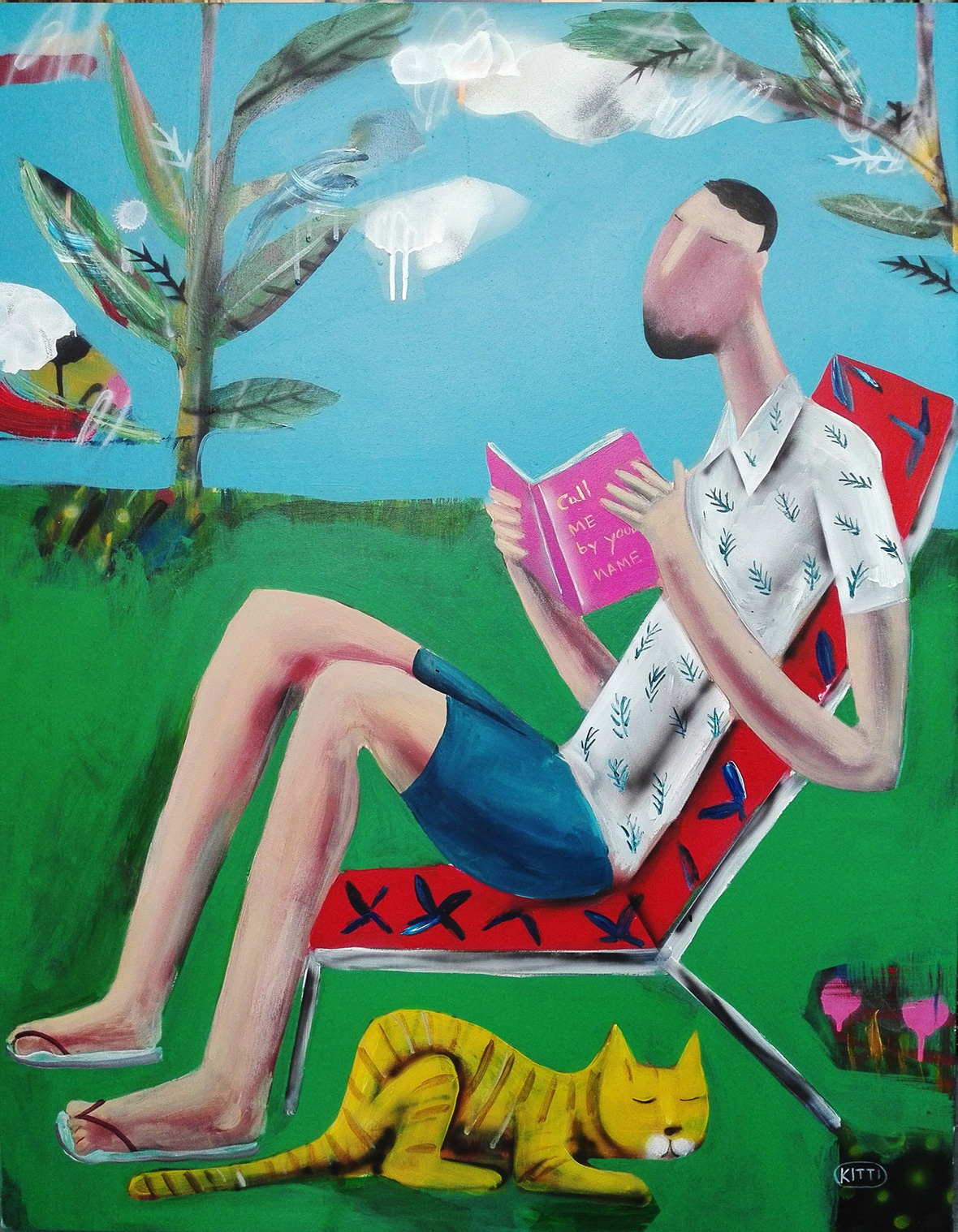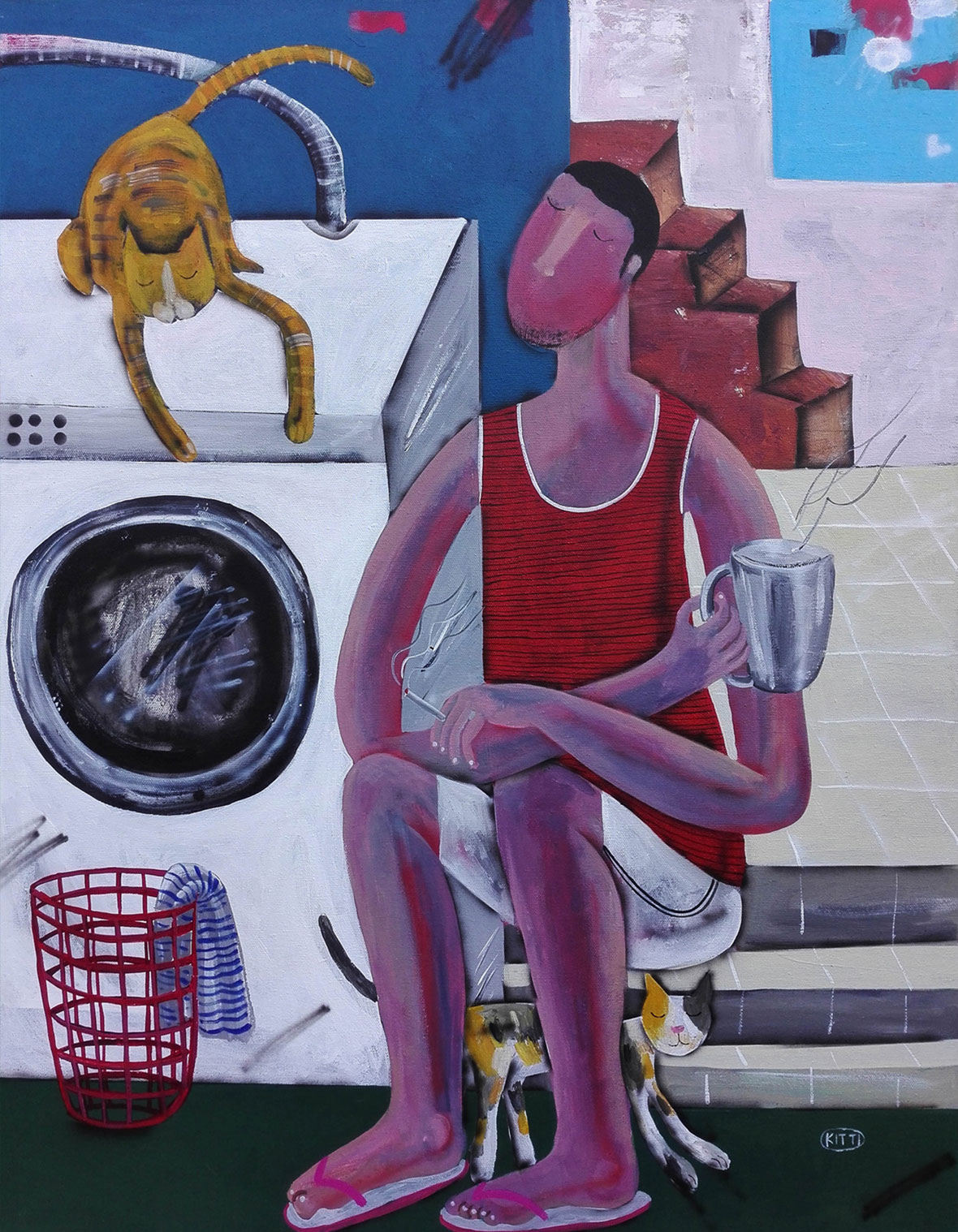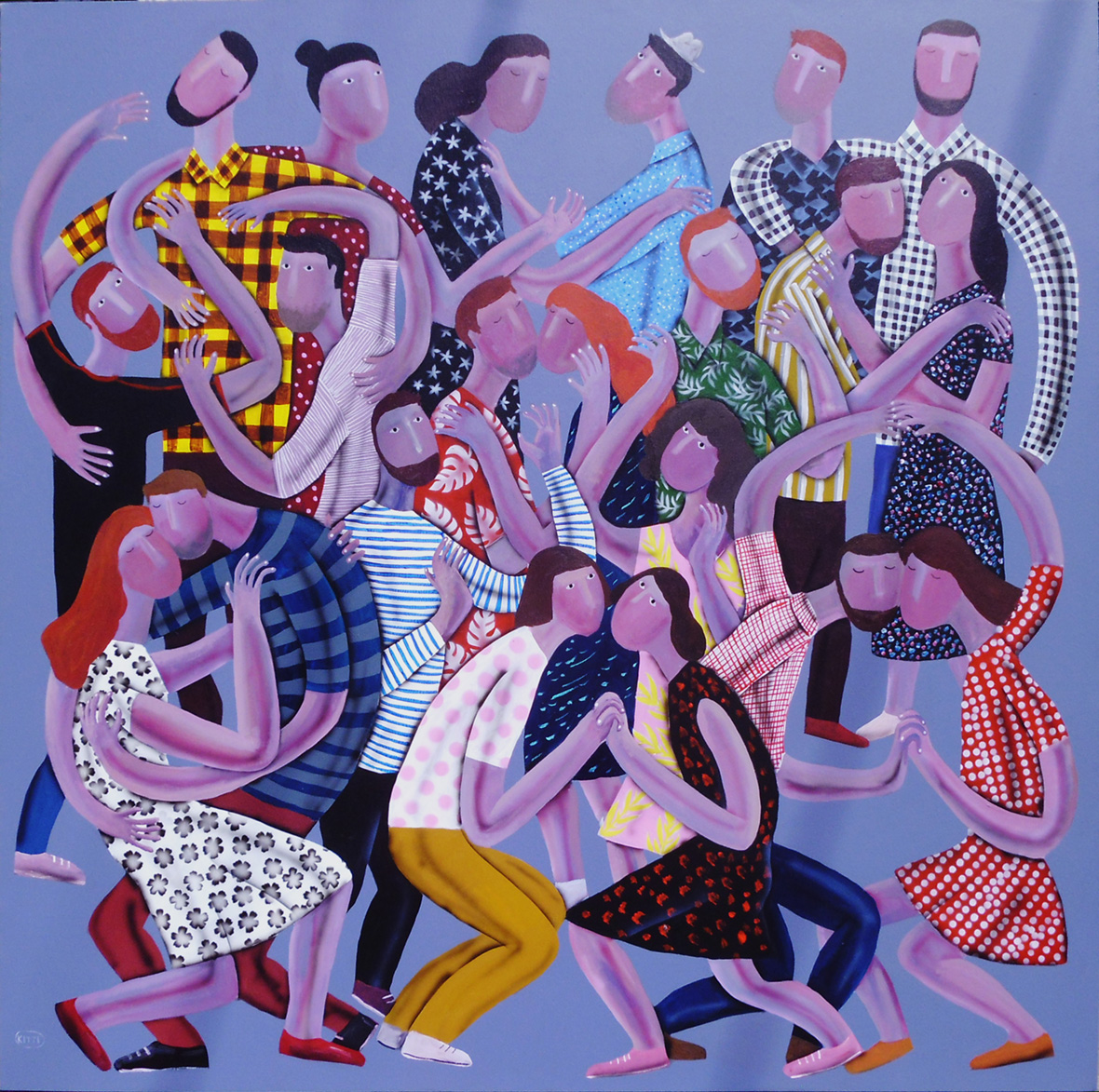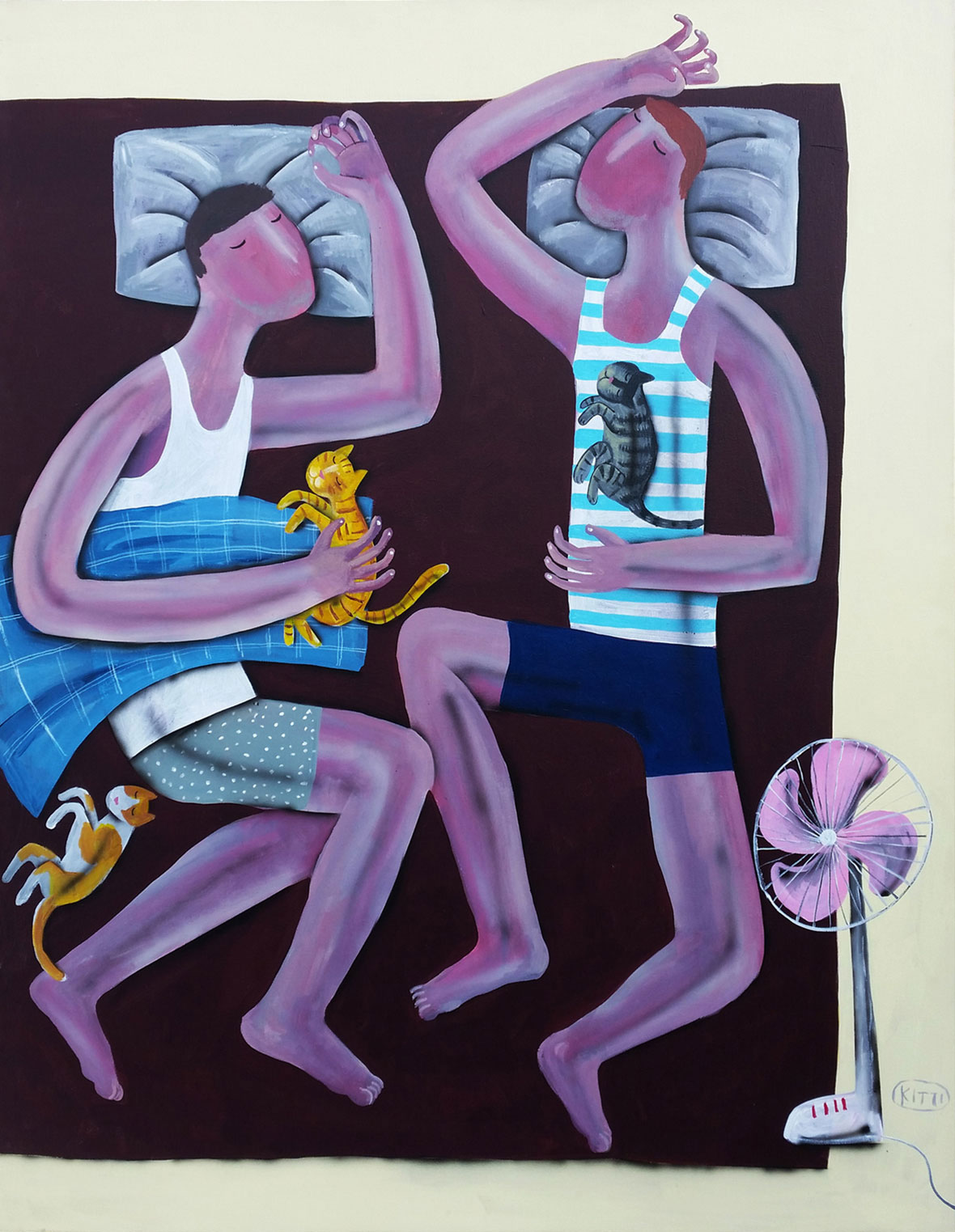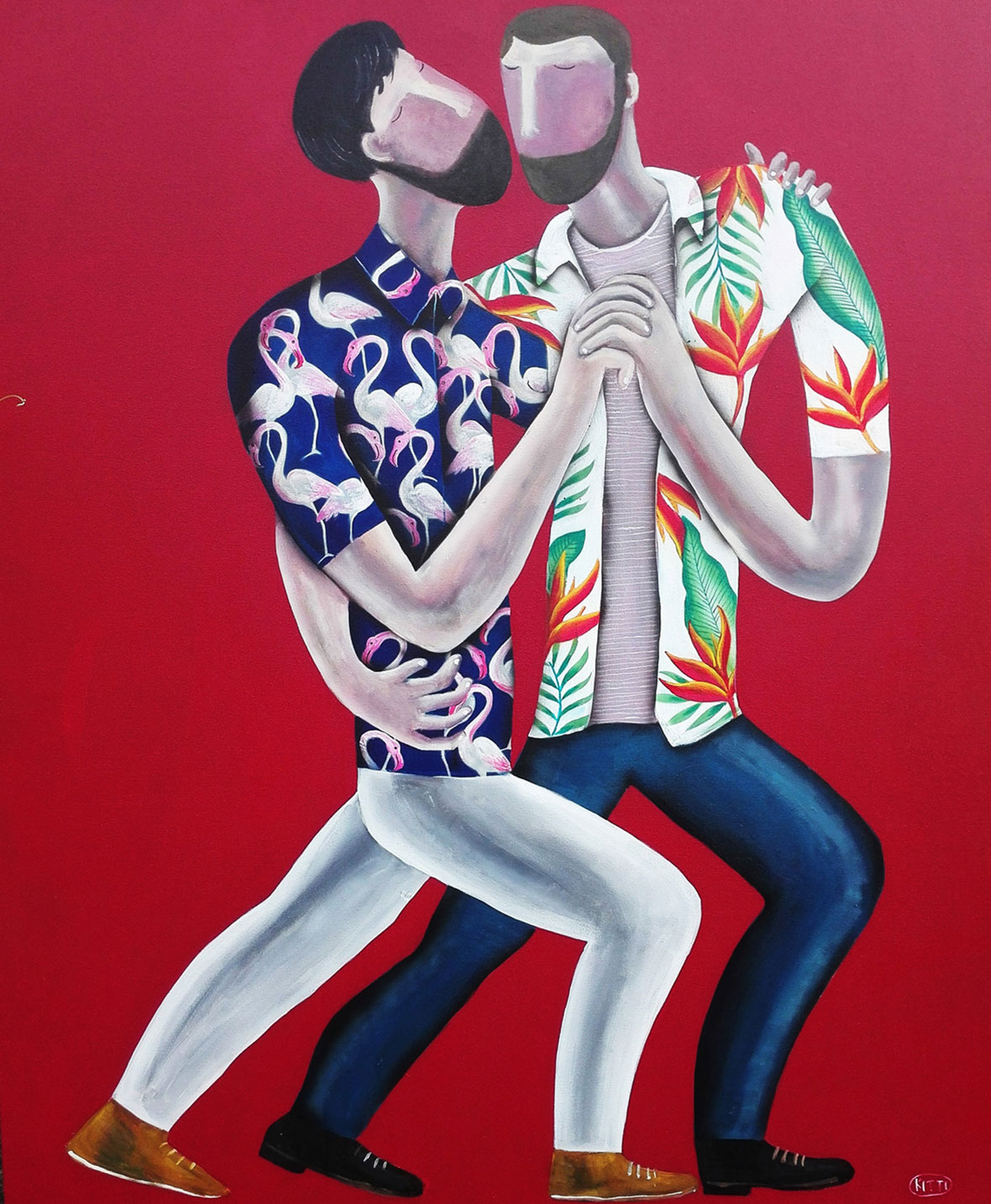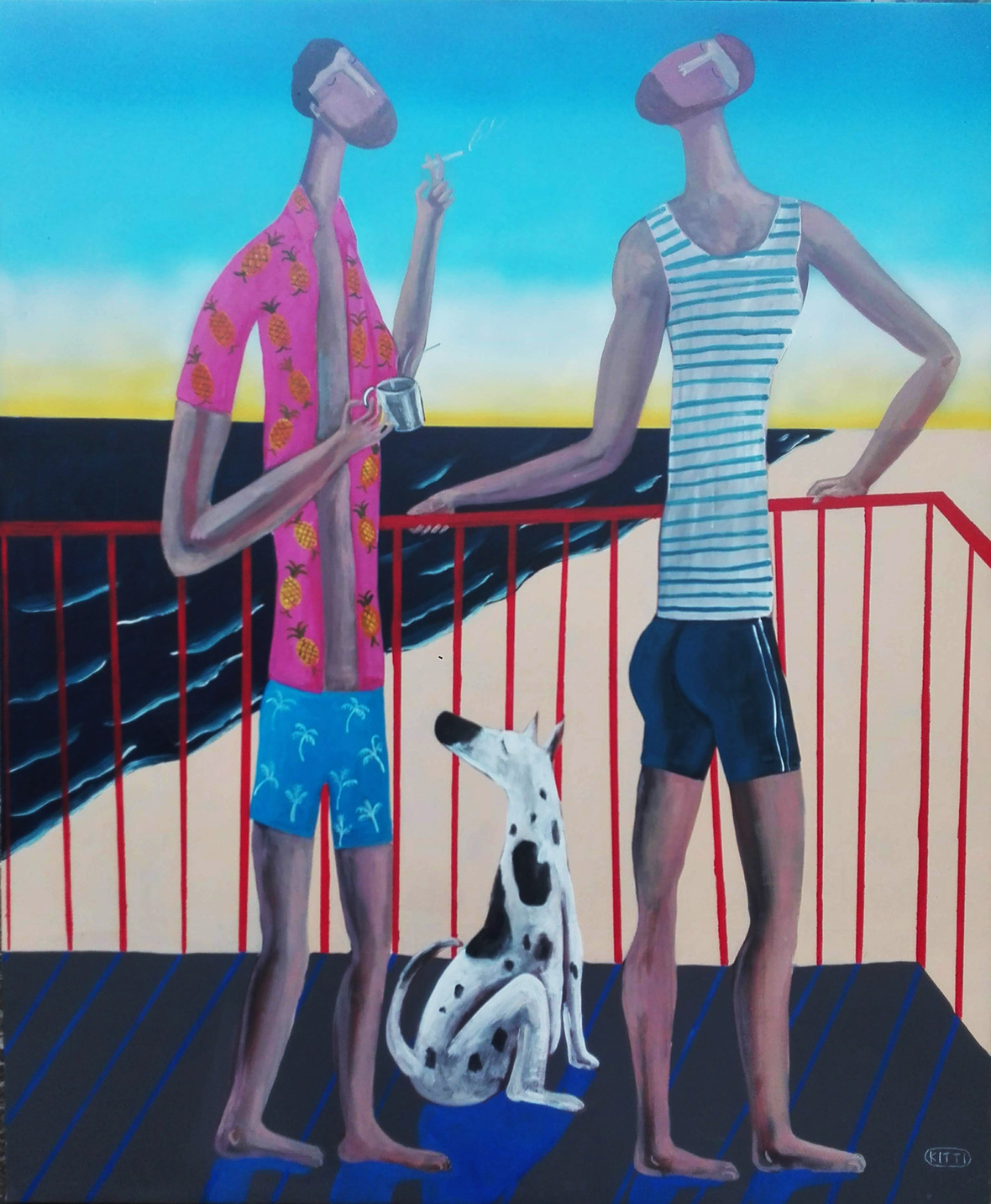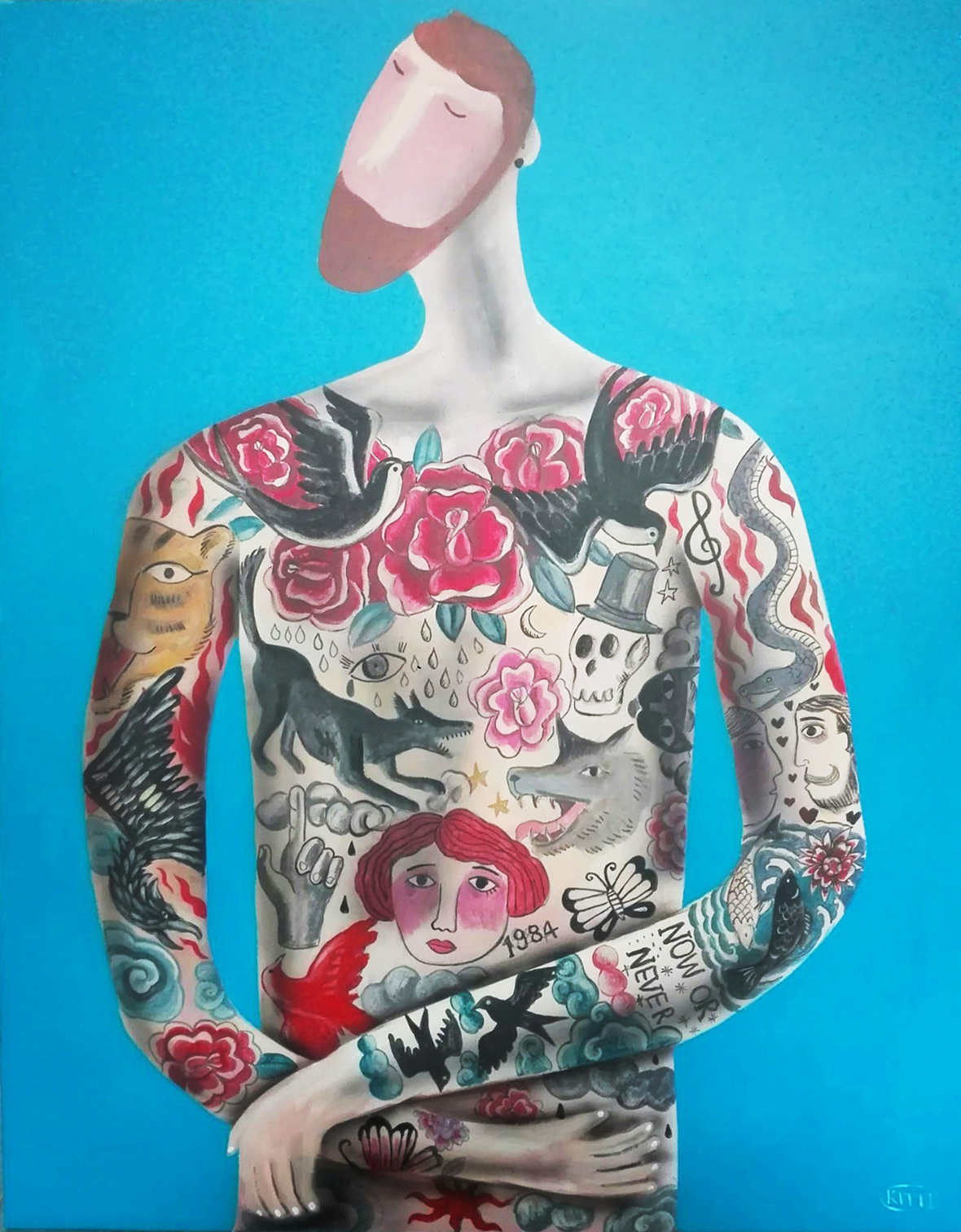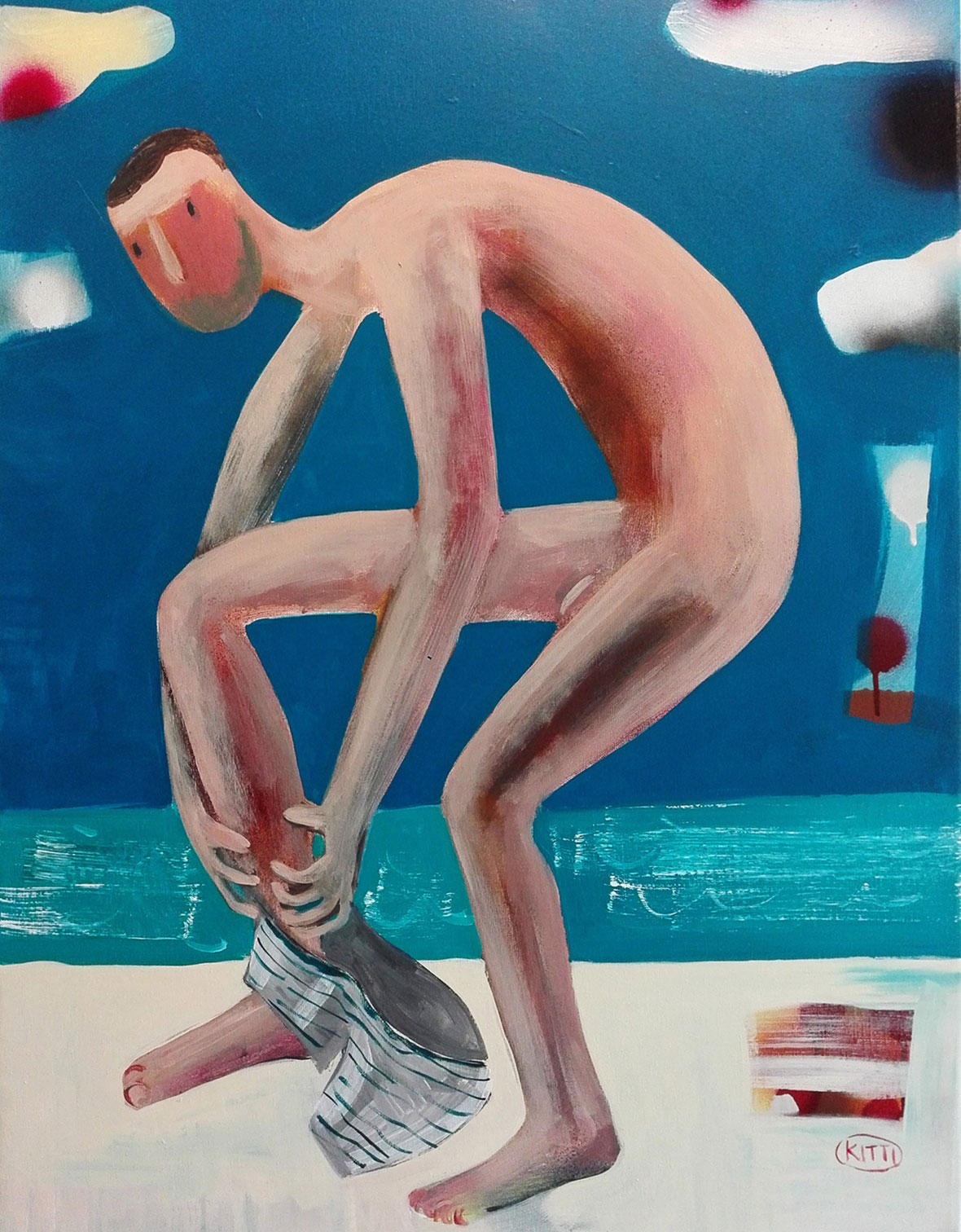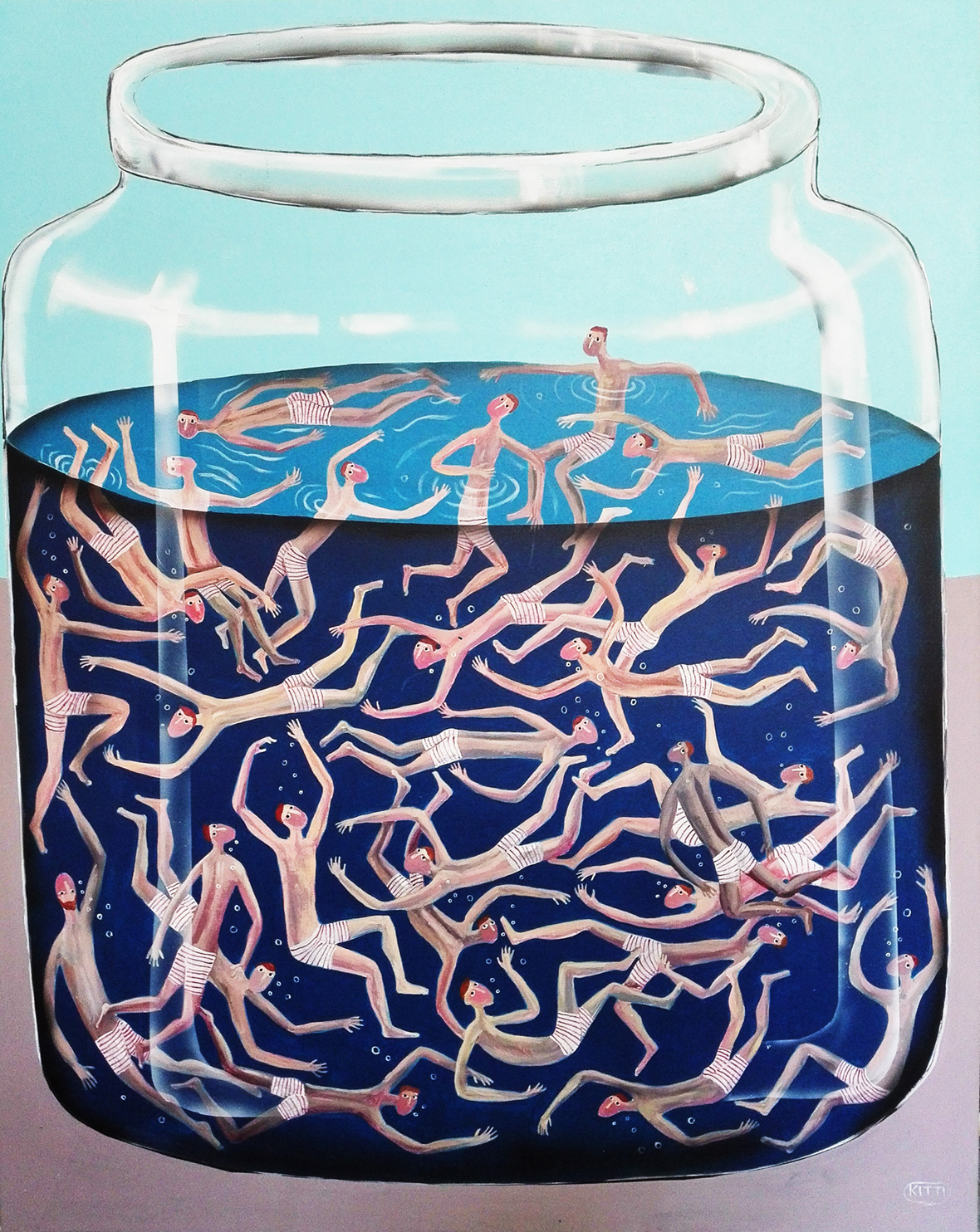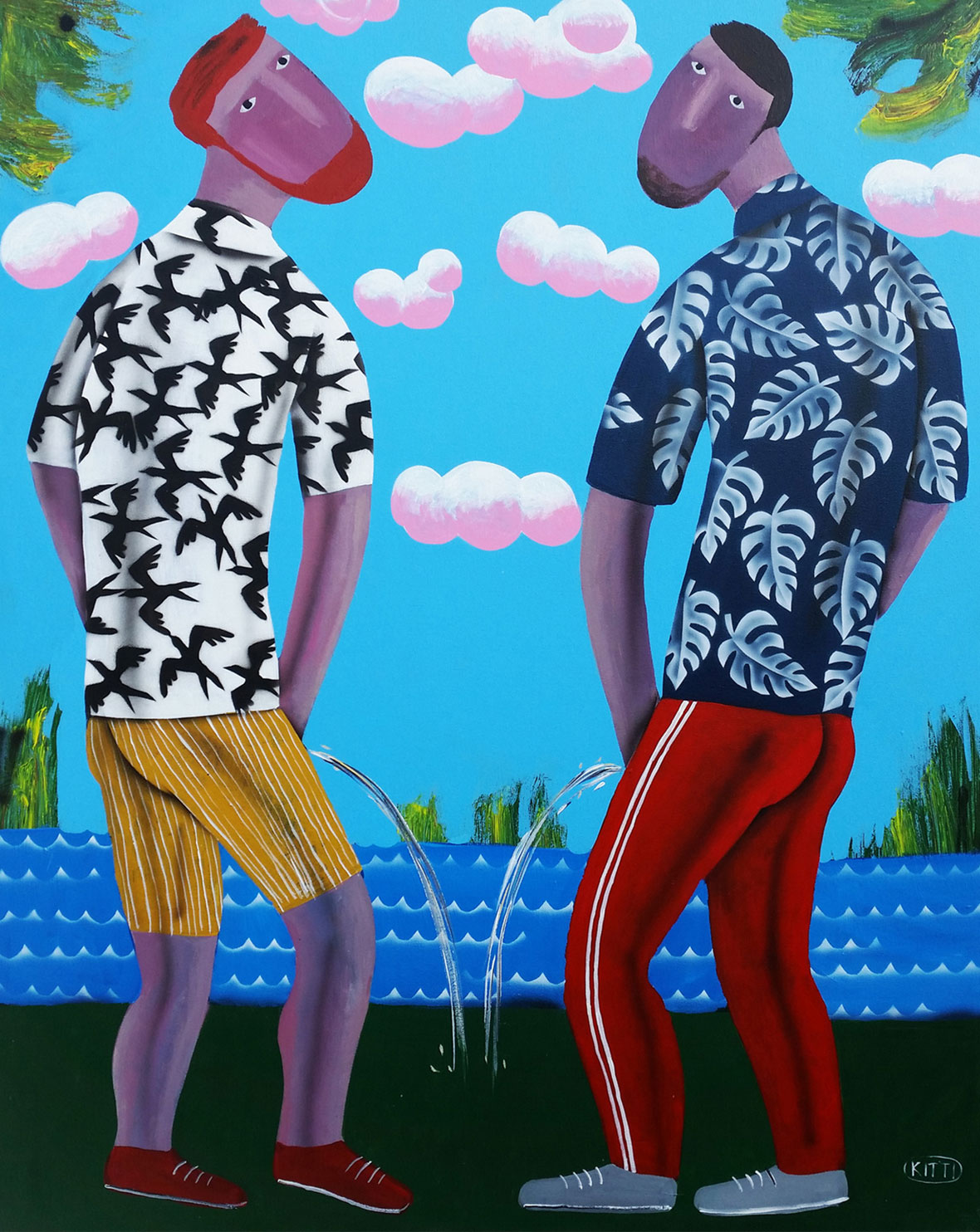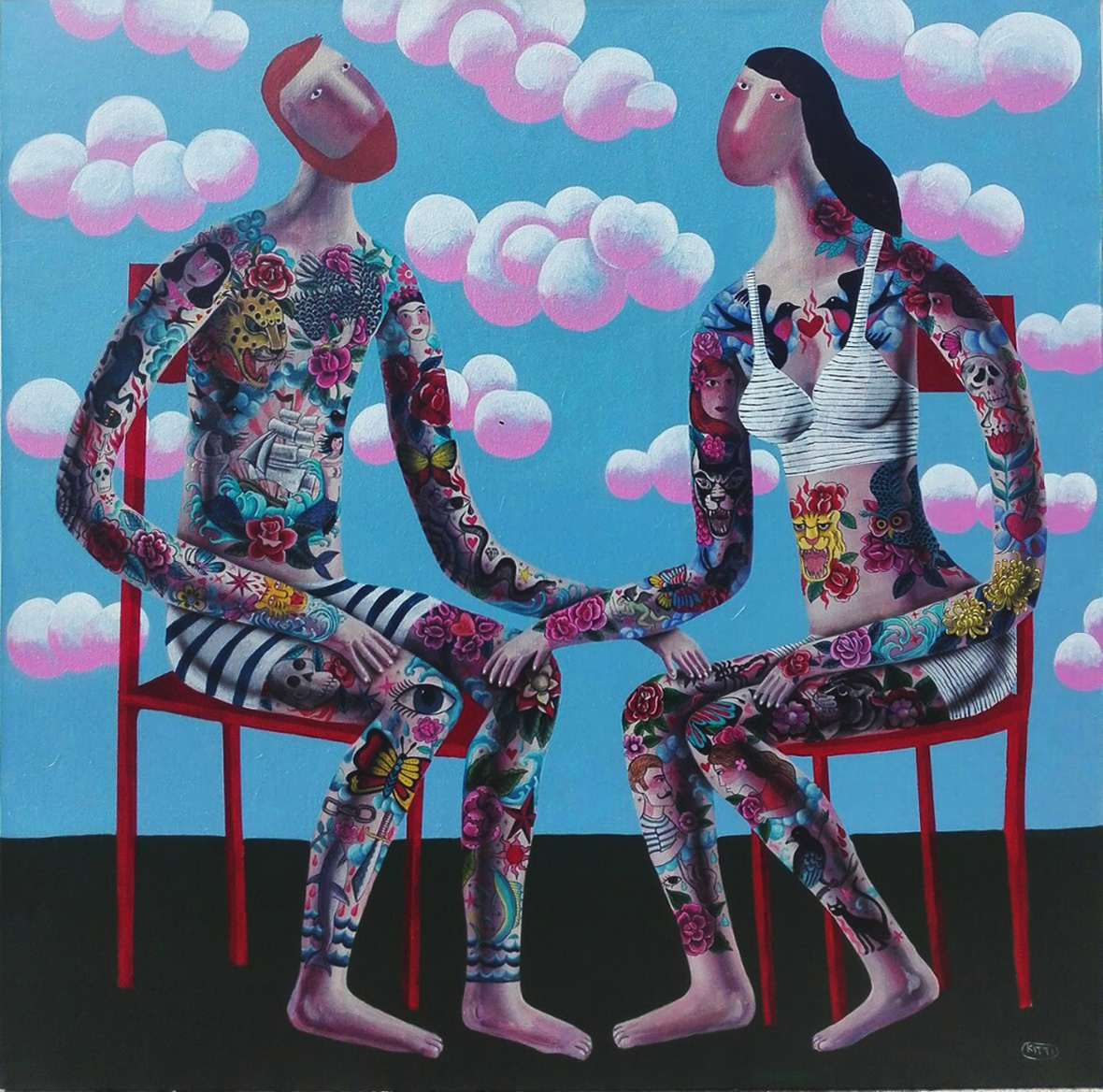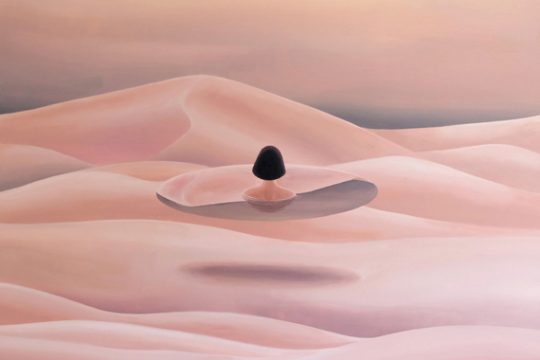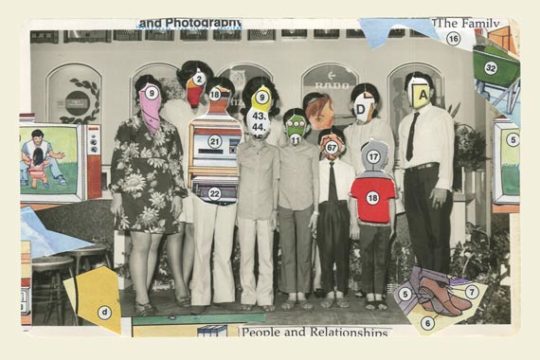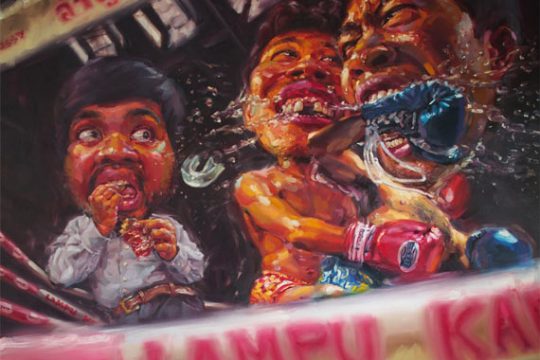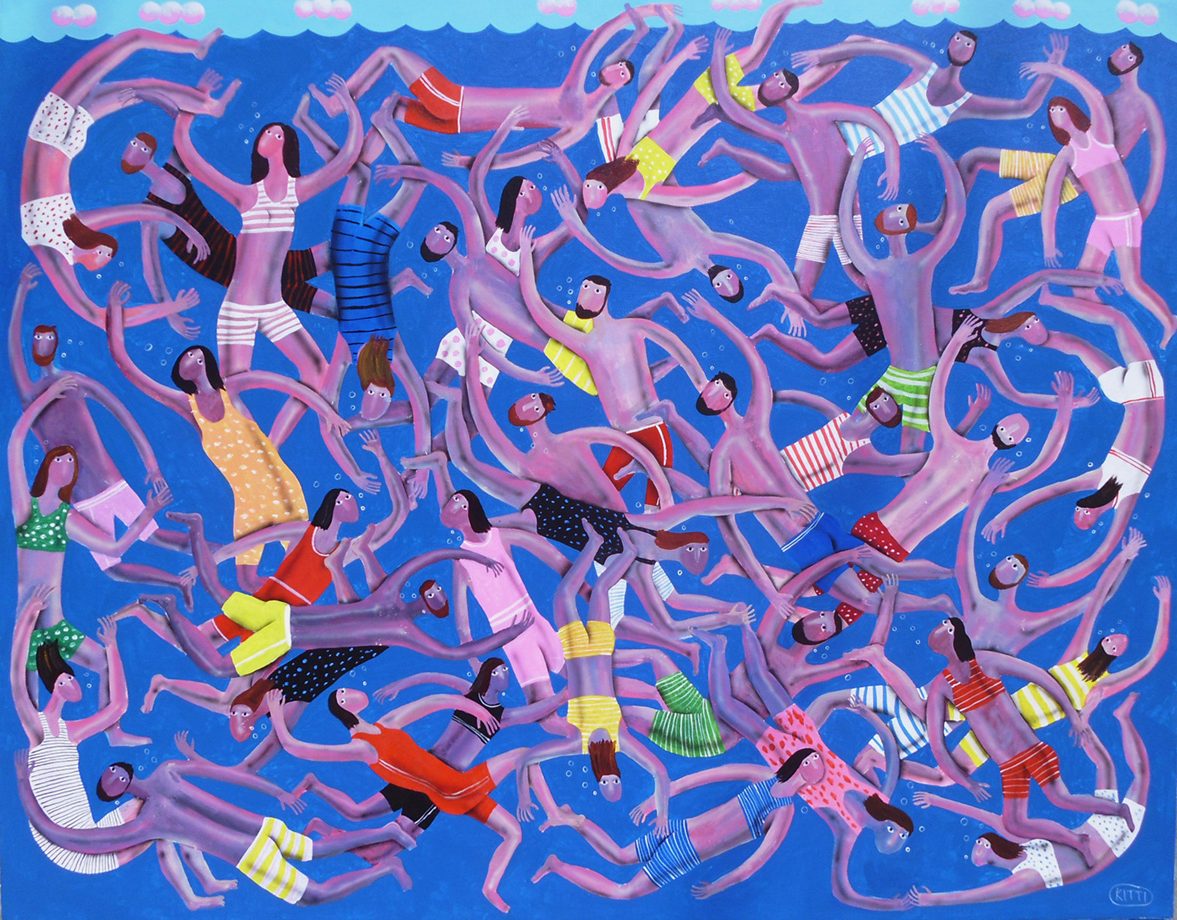
Thai artist Kitti Narod sees himself as an underdog of Bangkok’s art scene, an outsider who’s happy just to quietly sell his paintings online. “Have you seen the movie Parasite? I’m the guy in the basement,” he laughs. This self-deprecation and humility, however, is at odds with his thriving career.
To the untrained eye, Narod’s paintings might appear innocent at first glance: long-limbed, cartoonish characters roam his canvases, living happy lives and enjoying simple pleasures such as whittling the afternoon away with a book or sipping a cup of hot coffee.
泰国艺术家 Kitti Narod 自视为曼谷艺术界的无名之辈和旁观者,满足于在网上卖卖画作的低调生活。“你看过《寄生虫》这部电影吗?我就是住在地下室的家伙。”他笑着说道。不同于他的这种自嘲和谦卑心态,他的艺术事业正蓬勃发展。
不仔细看的话,Kitti 的画作充满纯真的风格:四肢纤长的卡通化人物,各种惬意悠闲的活动,生活简单又有乐趣:有书、有咖啡,消磨着下午的时光。
Narod’s paintings are based on everyday observations, but they’re often tinged with a pop-culture sensibility. He mentions films such as Lala Land and Billy Elliot as influences, citing their colors and musicality. And indeed, his colorful compositions do carry a sense of rhythm. His characters, often shown with their curvy arms held high, can even seem like they’re performing a synchronized dance. This feeling of movement, combined with the myriad of patterns in their clothes, creates a mesmerizing effect.
Kitti 的画来源于他的日常观察,但往往都会融入一些流行文化的元素。《爱乐之城》和《跳出我天地》之类的电影对他的创作影响很大,尤其是电影中的色彩和音乐元素。正因如此,他色彩丰富的作品看上去充满音乐的韵律感。画中的人物角色经常举起弧线型的手臂,像是跟着音乐在跳舞。这种动感,加上衣服上丰富多样的印花图案,不知不觉就吸引住人们的目光。
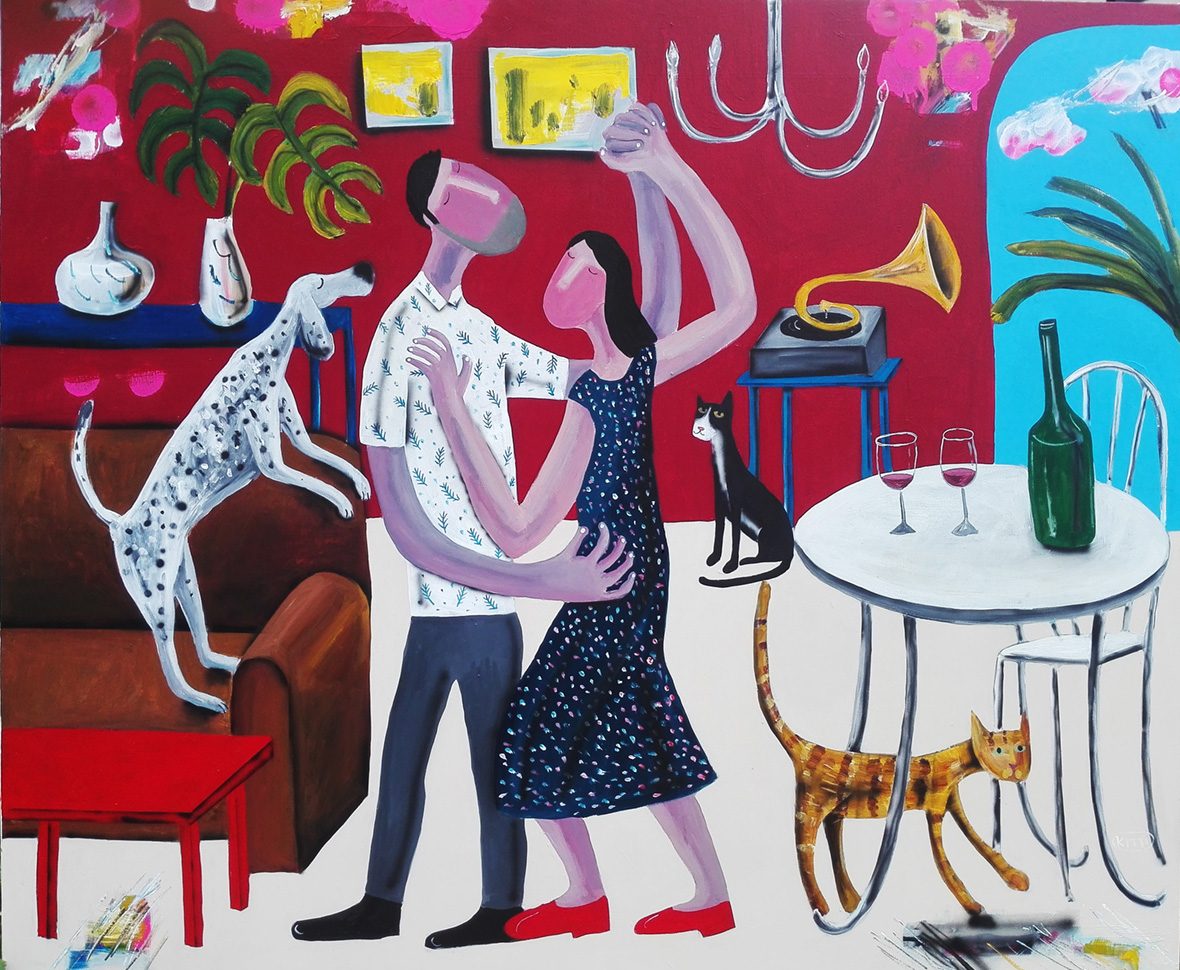
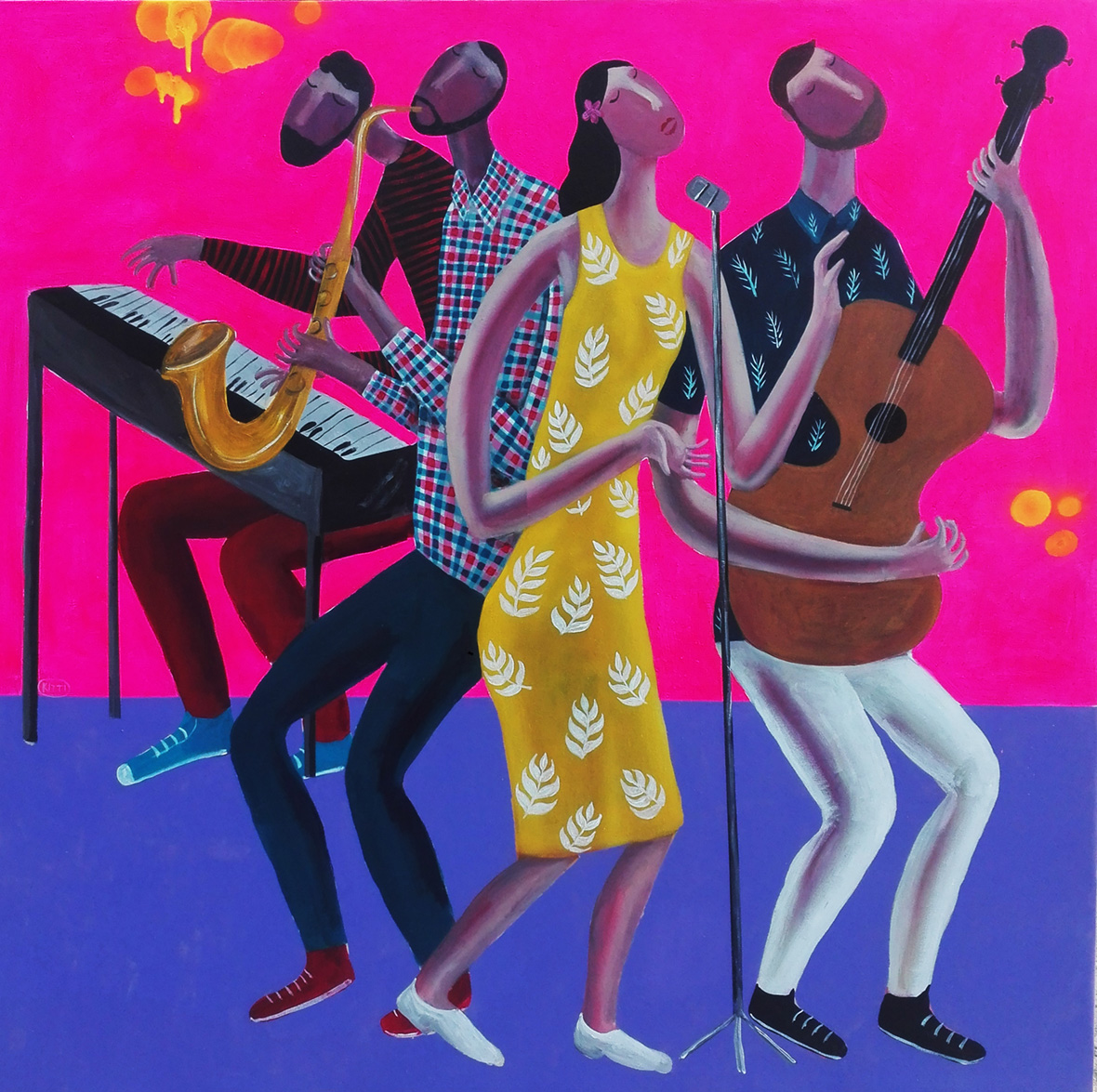
One of his most notable pieces is Horizon, an imposing painting showing different groups of people hugging, holding hands, and kissing each other in a park. A sense of utopian harmony radiates from the canvas. This painting was a special commission for Spectrosynthesis II, Asia’s largest LGBTQ exhibition to date, in Bangkok. Homosexuality seems widely represented through the featured characters but Narod characters are androgynous. “My idea was to explore their gender diversity. If you look closer, I don’t define their sex,” he says.
他最著名的作品之一是《Horizon》(地平线),这幅大型画作展示了一群人在公园里拥抱、牵手和亲吻,整个画面散发出乌托邦式的和谐氛围。这幅画是他受曼谷“Spectrosynthesis II”展览委托而创作的,该展览是目前亚洲目前最大型的LGBTQ 展览。乍看之下,这幅画似乎描画了一群同性恋者,但实际上,Kitti 并没有赋予他们特定的性别。他说:“我想探索性别的多样性。如果你认真看,你会发现,我并没有规定他们的性别。”
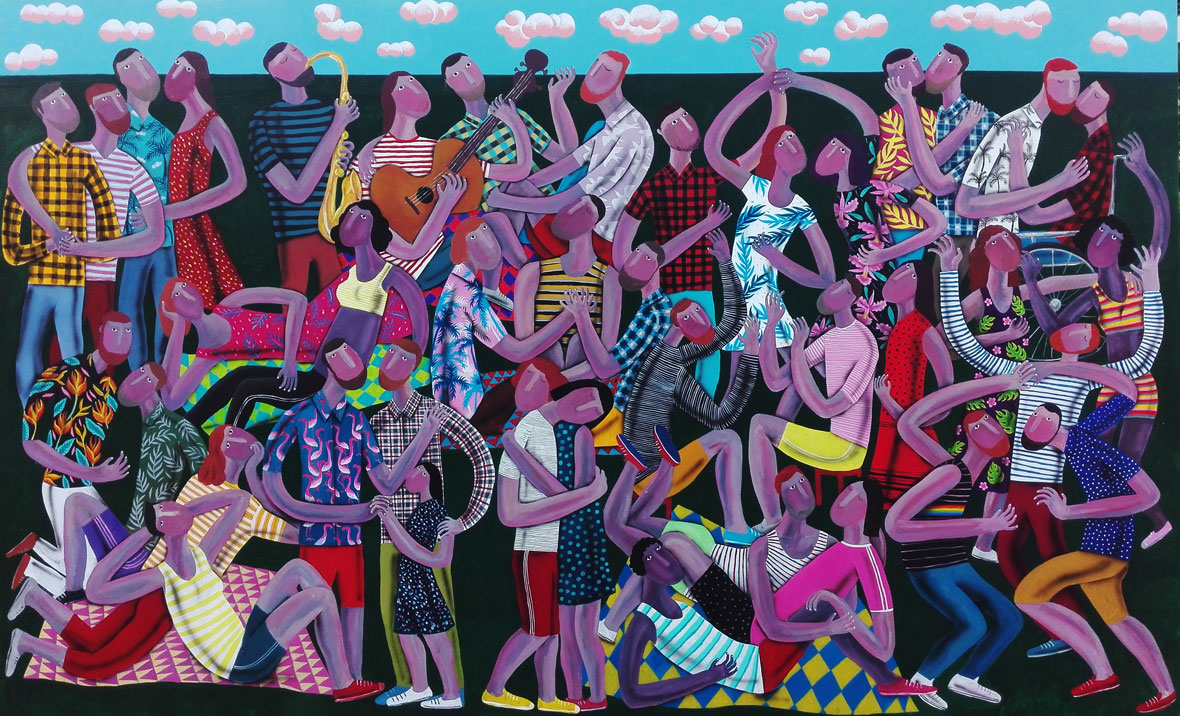
Narod’s partner of 15 years, a Welshman named Gwyn Faemol, is pictured in many of his works. Surrounded by their many pet cats, these paintings affectionately portray the couple’s domestic routine as a family, whether it be waking up, cooking together, or undressing to have a shower together. Through highlighting the normalities of their day to day, Narod looks to emphasize the similarities between gay and heterosexual relationships, speaking to the fact that, a person’s sexual orientation doesn’t make them different—we’re all human.
Kitti 的伴侣 Gwyn Faemol 是威尔士人,也常常出现作品中,他们在一起已经长达十五年了。画面里,Kitti 描画了两人温馨的家庭生活,和他们养的几只宠物猫一起生活,一觉醒来,一起煮饭、洗澡。这些稀松平常的生活场景,正是 Kitti 希望向世人展示的:同性恋与异性恋并无不同,不管一个人的性取向如何,所有人都是一样的,我们都是人类。
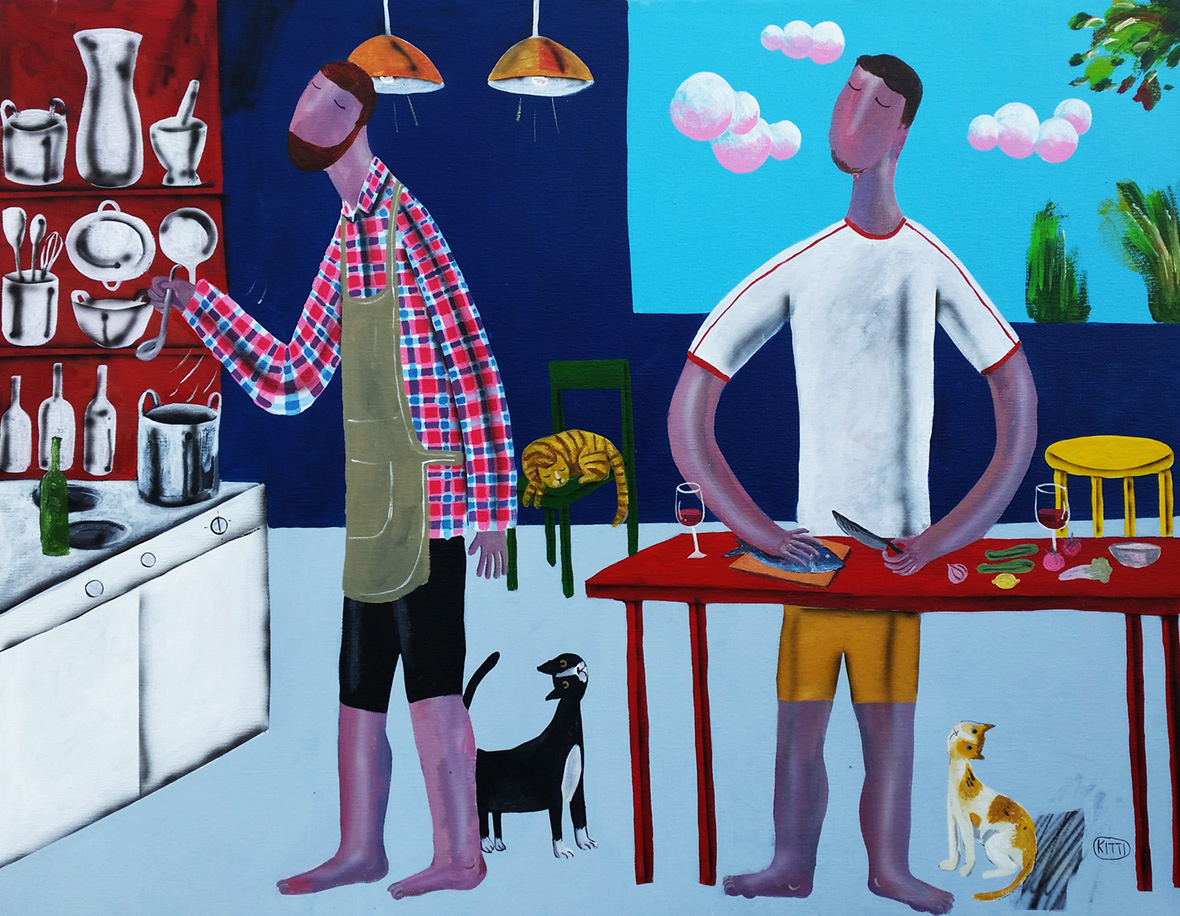
There’s a subtle eroticism in many of Narod’s paintings, driven, he admits, by his sexual desires. For instance, he occasionally includes his favorite porn actor—a bearded American man covered in tattoos—in his works. Even a painting of people smoking can have raunchy implications, as an allusion to it being a moment of post-coital bliss. A nude beach populated by men becomes a luscious playground of temptation. “I’m sick, sorry,” Narod laughs
Kitti 说自己许多画作中都隐约透过出情色的气息,这大概源于自己内心的欲望。例如,他偶尔会在他的作品中描画他最喜欢的色情演员——一个留着纹身和胡子的美国男演员。即使是抽着烟的画面,也散发着一丝暧昧的意味,暗示着性爱后的时刻。而人满为患的裸体海滩则变成一个充满诱惑的游乐园。“我可能有点入魔了,抱歉。”Kitti 笑着说道。

Occasionally, Narod also focuses on social-political adversities. In Middle Class and Capitalism, with what seems to be a marathon, he offers commentary on the pointlessness of the modern rat race. The inconspicuous elements of People in the Rain are related to political tensions in East Asia. And, in Bare, he alludes to human fragility; the Covid-19 epidemic has shown that we are all equally vulnerable to whatever the world throws at us.
有时,Kitti 也会在作品中表达社会政治问题。在《Middle Class and Capitalism》(中产阶级与资本主义)中,他通过一场马拉松比赛,批判现代社会无意义的竞争;而在《People in the Rain》(雨中人)中,又通过一些不起眼的细节暗指东亚紧张的政治局势;在《Bare》(裸露)中,他揭露人类的脆弱性;一场新冠肺炎疫情警醒着人们,面对这样的灾难,所有人都是一样脆弱的。
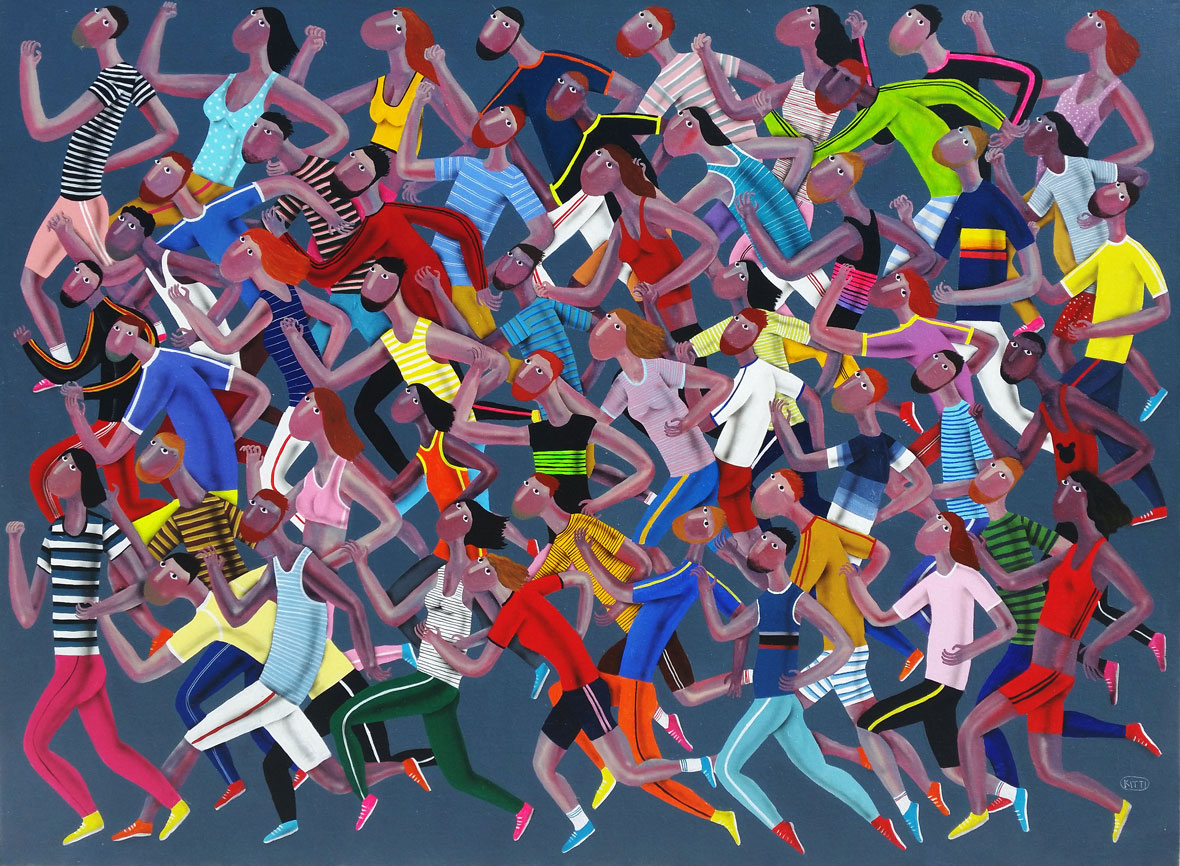
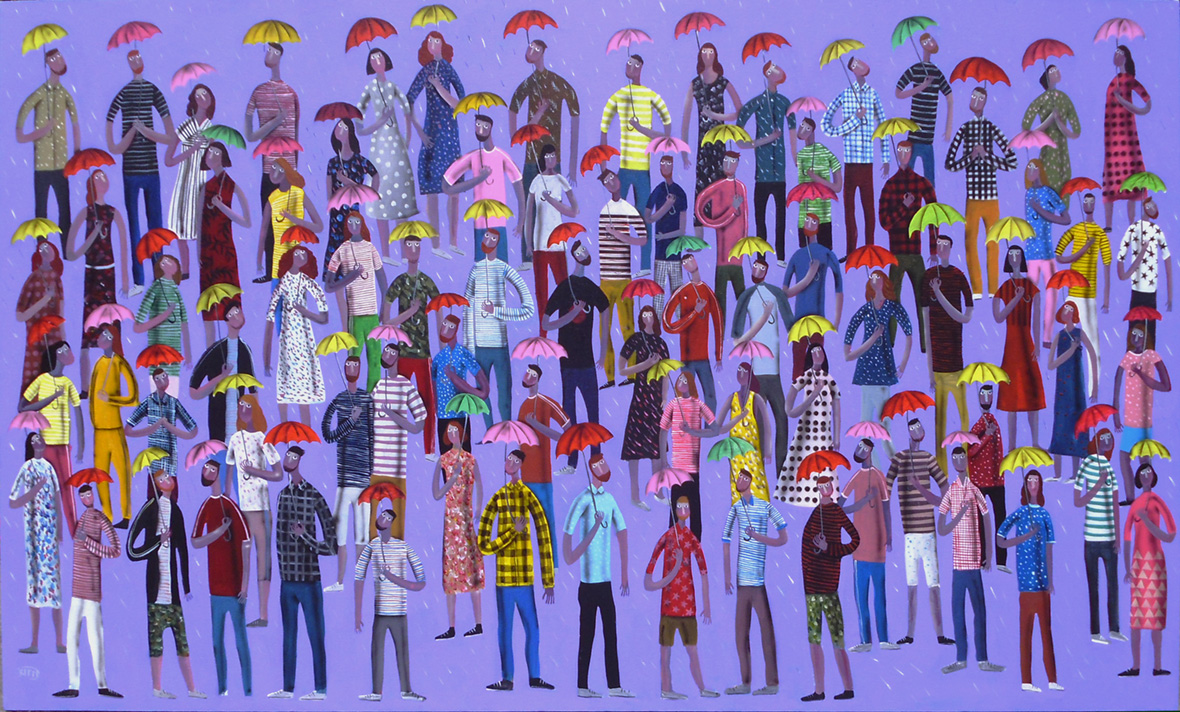
Narod doesn’t see himself as an LGBTQ artist. “My art is about people. When I see another human being, I sympathize; we all share the same happiness and sadness,” he says. “It’s also about equality and space. Space means opportunity, we all need to share it equally, even if it sounds utopian. I don’t want to preach or moralize, I just hope that people see my paintings and feel more connected.”
Kitti 不认为自己是 LGBTQ 艺术家。他说:“我的艺术关注的是人类。当我看到另一个人时,我可以与他产生共情;所有人都会感受到幸福和悲伤。我的作品也关注平等与空间。这里的空间是指人们获得的机会,每个人都应该有平等的机会,虽然这听起来有点乌托邦,我也不是想说教,只是希望人们看到我的画后,能产生共鸣。”
Like our stories? Follow us on Facebook and Instagram.
Instagram: @kittinarod
Facebook: ~/KittiNarodGallery
Contributor: Tomas Pinheiro
Chinese Translation: Olivia Li

